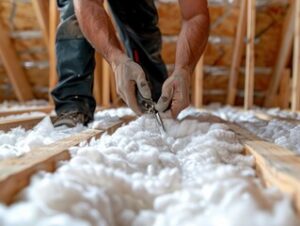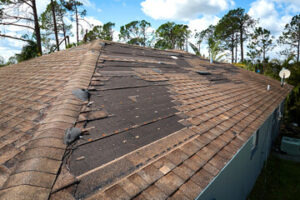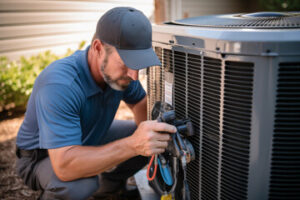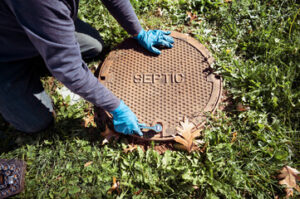Batana oil is a natural product known for its extensive benefits, particularly in hair and skin care. Extracted from the nut of a specific palm tree, it has been used for generations as a remedy for hair loss, skin nourishment, and overall beauty enhancement. Its rich composition of essential fatty acids, antioxidants, and vitamins makes it a highly sought-after ingredient in various cosmetic formulations.

Many people who have used this oil swear by its ability to restore hair health, giving it a thick, shiny, and more vibrant appearance. It is particularly beneficial for those experiencing hair thinning or dryness, as it penetrates deep into the scalp to provide hydration and promote growth. Visit Website to learn more.
The oil is often applied directly to the scalp and massaged in circular motions to stimulate circulation, allowing nutrients to reach hair follicles more effectively. Regular application can lead to noticeable improvements in texture, strength, and volume. Some individuals even use it as an overnight treatment, allowing the oil to deeply nourish the hair before washing it out in the morning. Unlike synthetic hair treatments, which may contain harsh chemicals, batana oil is purely natural, making it suitable for all hair types, including curly, straight, or textured hair.
Apart from its hair-enhancing properties, this oil is also widely used for skin care. Many people apply it to dry or damaged skin to restore moisture and elasticity. It is particularly effective in reducing the appearance of scars, fine lines, and stretch marks. Its ability to deeply penetrate the skin allows for better hydration, making it an excellent alternative to commercial moisturizers that often contain artificial ingredients. Those suffering from skin conditions such as eczema or psoriasis may find relief by incorporating this oil into their daily skincare routine. Because of its mild and natural properties, it is gentle enough for individuals with sensitive skin.
One of the reasons batana oil has gained popularity is its ability to support a more youthful and radiant appearance. With regular use, it helps to balance the skin’s natural oil production, reducing excess dryness or excessive greasiness. This makes it an excellent choice for people with both dry and oily skin, as it works to bring harmony to the complexion. The presence of antioxidants helps protect against environmental damage, such as pollution and UV exposure, which can contribute to premature aging. By consistently using the oil, individuals may notice fewer wrinkles, smoother texture, and an overall more even skin tone.
Another remarkable aspect of batana oil is its potential for healing minor wounds and irritations. It has natural antibacterial and anti-inflammatory properties, which can help speed up the recovery process for cuts, burns, and insect bites. Some users apply it to their lips to prevent chapping, especially in harsh weather conditions. Others incorporate it into their daily body care regimen, using it as a massage oil to relax muscles while simultaneously nourishing the skin. Because of its thick consistency, a small amount goes a long way, making it an economical and sustainable choice for those who prefer natural beauty solutions.
The process of extracting batana oil is traditionally done through careful and labor-intensive methods. The nuts are harvested, dried, and then pressed to release their rich, golden oil. This method ensures that all the beneficial properties remain intact, providing users with a potent and effective product. Unlike many commercial oils that go through extensive processing, which may strip away vital nutrients, batana oil remains in its purest form. This allows it to retain all the vitamins and fatty acids that make it so beneficial for hair and skin care.
People who use batana oil often praise its versatility. Some mix it with other natural ingredients such as aloe vera, coconut oil, or essential oils to enhance its effectiveness. Others prefer using it in its raw form, enjoying its earthy scent and thick texture as part of their beauty routine. Whether applied to hair, skin, or nails, it remains a go-to solution for those looking for a natural and holistic approach to self-care. The growing interest in natural and organic beauty products has led to a wider recognition of batana oil’s benefits, with more individuals seeking it out as a preferred alternative to synthetic cosmetics.
For those experiencing hair damage due to excessive styling, heat treatments, or chemical exposure, batana oil provides an effective way to restore health and vitality. It works to repair split ends, strengthen weak strands, and prevent further breakage. Many people also use it as a deep conditioning treatment, applying it before washing their hair to lock in moisture and protect against dryness. The nourishing properties of the oil ensure that the hair remains manageable, soft, and less prone to frizz, making it an excellent choice for individuals looking to improve the overall condition of their hair.
Another reason why batana oil has become so popular is its ability to promote hair growth. Many users have reported visible results after consistent use, with hair appearing fuller and healthier. Because of its natural composition, it does not cause irritation or buildup, making it a preferred option for those with sensitive scalps. By strengthening hair from the root, it ensures long-lasting benefits that go beyond superficial improvements. Regular use of the oil can lead to stronger, shinier hair that is less susceptible to damage caused by environmental factors and styling practices.
Beyond its beauty benefits, batana oil also aligns with sustainable and ethical practices. Many communities that produce this oil follow traditional harvesting and extraction methods, ensuring that the process remains environmentally friendly. The use of natural ingredients promotes a healthier approach to self-care while also supporting communities that have been using these methods for generations. This connection between tradition and modern beauty practices makes batana oil an excellent choice for individuals who value sustainability and authenticity in their personal care products.
Those who have incorporated batana oil into their beauty routine often find that it becomes an essential part of their self-care regimen. Unlike mass-produced commercial products that may contain fillers or artificial additives, this oil provides pure and natural nourishment. The ability to use it for multiple purposes, from hair conditioning to skin hydration, makes it a versatile and valuable addition to anyone’s personal care collection. As more people discover the advantages of using plant-based and holistic beauty solutions, batana oil continues to gain recognition as an effective and reliable option for maintaining healthy hair and skin.
The rising popularity of batana oil reflects a growing shift toward natural beauty solutions. With consumers becoming more conscious of the ingredients in their products, many are seeking alternatives that are free from harmful chemicals. This oil offers a time-tested and proven method for enhancing beauty while remaining gentle on the body. Its effectiveness, combined with its sustainable sourcing and traditional extraction methods, makes it a powerful addition to the world of natural personal care. Whether used as a standalone treatment or combined with other natural ingredients, batana oil remains a valuable choice for anyone looking to enhance their appearance with a pure and nourishing solution.
As research continues to highlight the benefits of natural oils, batana oil is expected to gain even more recognition in the beauty and wellness industry. Its ability to provide deep hydration, promote hair growth, and rejuvenate the skin ensures that it will remain a staple in natural beauty care. With its rich history and proven results, it is a product that stands the test of time. People from various backgrounds and hair types have embraced its transformative properties, making it a cherished and trusted remedy for maintaining beauty and health. By choosing batana oil, individuals are investing in a high-quality, natural solution that delivers real and lasting benefits.



